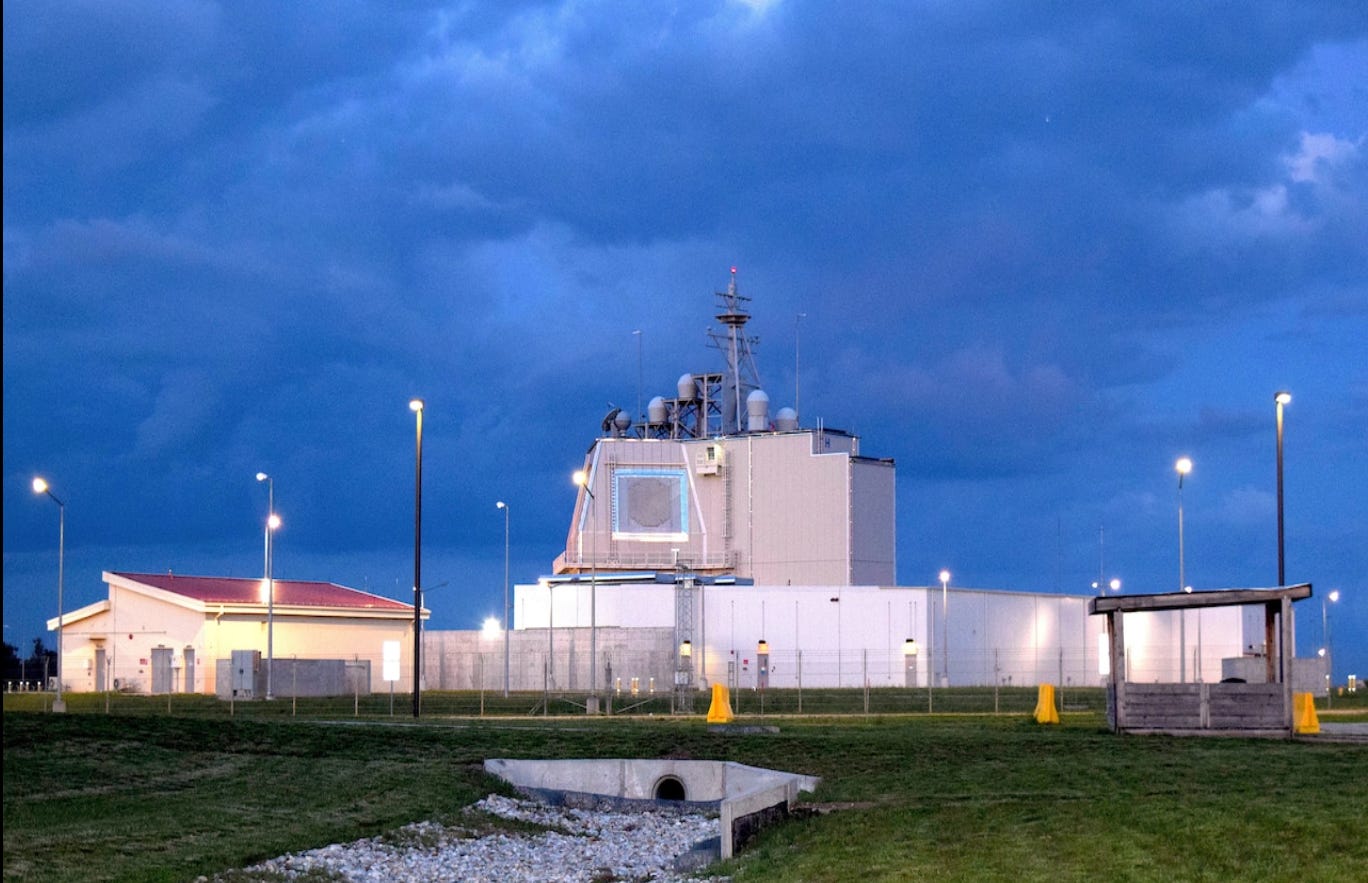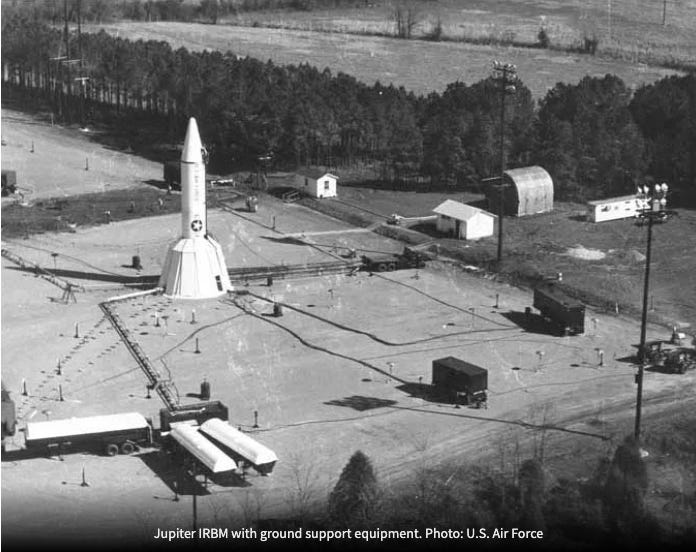PARIS — Surrounding the outer periphery of Russia is a collection of bargaining chips which if adeptly played hold the potential of bringing as peaceful an end to the current confrontation between Vladimir Putin and the West as did their antecedents 60 years ago when they helped defuse the Cuba Missile Crisis.
The Aegis missile systems of the 21st century are as toxic to Putin and his vision of Russia and its security as were the Jupiter missiles with their 1,500-mile range— enough to reach Moscow—that the United States deployed in Turkey in 1962, and then suddenly pledged to withdraw. It was a move by President John F. Kennedy that brought an immediate, edge-of-the-cliff end to the Cuban Missile Crisis. The Aegis, and even more advanced anti-missile devices now in development that could be launched from the same platforms, hold the potential of utterly neutralizing the hypersonic missiles which Putin, with a flourish, unveiled to the world last July.

Aegis systems were first installed in 2016 in Rumania, once a Warsaw Pact ally of the Soviet Union. After its collapse, Rumania joined the NATO alliance. Now, there is a fully operational Aegis missile base there.
But what has made Putin especially crazy is the construction of a similar missile base in the Polish town of Redzikowo. It’s barely 170 miles from the Russian enclave of Kaliningrad. Four years ago, Russia based its nuclear-capable Iskander missiles in Kaliningrad. Last month, Kinzhal hypersonic land-attack missiles were spotted arriving there.
Russia has expressed concern that offensive cruise missiles could be based at the Aegis facility as well, but none has been slated for deployment there and the U.S. has denied it has any intentions to do so.
Indeed, to reinforce its commitment to the deploying of nuclear-capable missiles in western Russia, the ministry of defense launched its annual Grom drills Saturday “under the supervision of Russian armed forces supreme commander-in-chief, Vladimir Putin”, Russia’s defense ministry said in a statement. “Ballistic and cruise missiles will be launched in its course.” It is just such weapons that the Aegis, especially the Poland-based system, is designed to neutralize—a threat that Putin should be most anxious to reduce.
 As it happens, there are also Aegis systems deployed in Japan, where they are clearly centered more on defense against North Korean or even Chinese missiles. Still, in December Russia deployed Bastion missiles systems in the nearby Kuril Islands also claimed by Japan.
As it happens, there are also Aegis systems deployed in Japan, where they are clearly centered more on defense against North Korean or even Chinese missiles. Still, in December Russia deployed Bastion missiles systems in the nearby Kuril Islands also claimed by Japan.
Biden and before him Donald Trump have insisted that the Aegis systems are neither offensive weapons nor intended to defend against Russian missiles. They are intended against missiles launched from Iran or North Korea. There might be a case to be made for the Rumanian installation being directly targeted at Iran. But the installation in Poland is barely 20 miles from the Baltic Sea. The most likely target for any defensive system there would seem to be missiles launched from Russia, particularly Kaliningrad, an odd enclave belonging to Russia and sandwiched between two NATO nations—Poland and Lithuania.
“China and Russia have observed our way of war and are on the move to reshape the environment to their favor,” the Congressional Research Service observed in a report to Congress in December.
So how might this play out as a means of deterring Russian aggression in Ukraine or elsewhere for that matter? The Polish-based Aegis system, it would seem, is easy. The missiles still haven’t even been deployed, and probably won’t be operational under a best-case scenario before the end of this year. Plenty of time to see some kind of trade-off today, in the form of full-scale missile negotiations or a quiet, Jupiter-style understanding—utterly appropriate to reduce tensions or deter war.
Moreover if, as Biden suggested in his Friday evening address, Putin has decided on war, what’s to be lost by throwing an enormously appealing sweetener into his path? The Grom nuclear strike exercises only demonstrate the depths of his paranoia on this issue. What’s to be lost by trying?
The Jupiter missiles as bargaining chips in 1962 were never mentioned in any of the formal diplomatic traffic that preceded Khrushchev’s decision to back off his plans to install Soviet nuclear missiles in Cuba. But there is growing evidence that this bargain was struck in private. On October 27, 1962, Khrushchev sent a message suggesting that any deal had to include removal of the ancient, liquid fueled Jupiters. Indeed, President Kennedy, in one moment of pique recalled that a year earlier he had wanted to remove the Jupiters from Turkey since as he put it “those friggin’ missiles” had become obsolete anyway.
 Robert F. Kennedy, the president’s brother, U.S. attorney general and the individual JFK turned to when he needed quiet diplomacy, met secretly the very afternoon of Khrushchev’s message with Anatoly Dobrynin, Soviet ambassador to the US. RFK told Dobrynin the president would be pulling the Jupiters out anyway, but he wanted any mention of that action excluded from a formal resolution of the Cuban missile crisis. The next morning, October 28, 1962, Khrushchev declared publicly all Soviet missiles would be removed from Cuba. In April 1963, the last Jupiters left Turkey.
Robert F. Kennedy, the president’s brother, U.S. attorney general and the individual JFK turned to when he needed quiet diplomacy, met secretly the very afternoon of Khrushchev’s message with Anatoly Dobrynin, Soviet ambassador to the US. RFK told Dobrynin the president would be pulling the Jupiters out anyway, but he wanted any mention of that action excluded from a formal resolution of the Cuban missile crisis. The next morning, October 28, 1962, Khrushchev declared publicly all Soviet missiles would be removed from Cuba. In April 1963, the last Jupiters left Turkey.
The parallel meeting set for next week between Russian foreign minister Sergei Lavrov and Antony Blinken, not only America’s secretary of state but equally a long-standing and trusted confidant of President Biden back to his days in the Senate, could be just the a moment to raise the issue of an Aegis trade. Alternatively, on Friday Secretary of Defense Lloyd Austin was due to hold a call with his Russian counterpart, Sergei Shoigu. Another opportunity.
At the same time, there have been no end of private discussions directly with Putin. And if Biden did not himself wish to raise the question of the Aegis systems, without a doubt French president Emmanuel Macron, who has spent considerable time and effort cultivating Putin, could be enlisted.
I’m persuaded that the mindset of Putin is not that dissimilar from that of Khrushchev. After all, it had been Khrushchev who “gifted” Crimea to Ukraine in 1954. Then, 60 years later Putin simply took it back. Today, this pattern of Russia’s gunpoint expansion must be broken, at any cost.
___________________________________________________________________

































 David A. Andelman is a Special Correspondent of
David A. Andelman is a Special Correspondent of 













